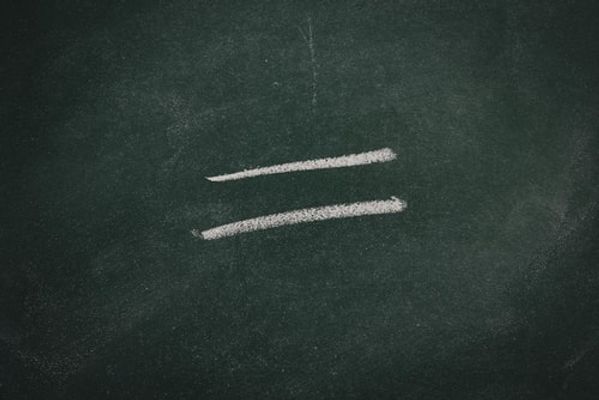2.4.1
Equality
The Significance of Educational Policies
The Significance of Educational Policies
Educational policies are concerned with government plans for what the education system should achieve and how it should be organised. Gillborn and Youdell identified four aspects of educational opportunity.


Educational policies
Educational policies
- Educational policies are concerned with government plans for what the education system should achieve and how it should be organised.
- Such policies include an understanding of the structure, role, impact, and experience of access to education, as well as the impact of globalisation on educational policy.


Key aims
Key aims
- The key aims of educational policy:
- Economic efficiency: improving skills of the labour force.
- Raising educational standards.
- Creating equality of educational opportunity.


Gillborn and Youdell
Gillborn and Youdell
- Gillborn and Youdell have identified four aspects of educational opportunity:
- Equality of access.
- Equality of circumstances.
- Equality of participation.
- Equality of outcome.


Access and circumstances
Access and circumstances
- Equality of access: Everyone should have the same opportunities to access schools of similar quality without unfair selection.
- Equality of circumstances: Everyone should start school at the same point in terms of home and material circumstance.


Participation and outcome
Participation and outcome
- Equality of participation: Everyone should have the same chances to participate on an equal footing in the everyday life of schools.
- Equality of outcome: Everyone should have the same chances of sharing the long-term benefits of schooling.


Focus
Focus
- Generally, educational policies have been concerned with equality of access.
Policies to Improve Equality of Opportunity
Policies to Improve Equality of Opportunity
There have been attempts to change policies in order to improve equality of opportunity in access to education. There have been fewer attempts to improve equality of circumstances.


Access to education
Access to education
- Since 1944 there have been attempts to improve the equality of opportunity, these have resulted in:
- The tripartite system (1944 – early 1970s).
- The comprehensive system (1970s onwards).


The tripartite system
The tripartite system
- The tripartite system was the first to provide free secondary education for all children, thus removing the barriers to secondary education arising from the requirement to pay fees.
- However, access to one of three different types of schools was through the 11+ exam which potentially disadvantaged working class children.


The comprehensive system
The comprehensive system
- The comprehensive system established a single type of school, accessible to all without selection and today nearly all pupils attend a non-selective comprehensive school.
- These may take the form of academies, free schools, faith schools, and community schools.


Circumstances
Circumstances
- There are few policies that have attempted to improve equality of circumstances, largely because such inequalities are rooted in the structure of inequality in society as a whole.


Compensatory policies
Compensatory policies
- Compensatory education policies aimed to discriminate in favour of young people facing disadvantages in education due to home life or social class.
- Compensatory education policies included:
- Educational Action Zones/Excellence in Cities (late 1990s – 2000’s).
- The pupil premium (2010 onwards). This gave schools with pupils from low income backgrounds more money and this had to be spent explicitly on helping those pupils.
Selection Policies in Education
Selection Policies in Education
In accordance with the School Admissions Code, all schools (with the exception of a few remaining grammar schools) are prevented from selecting pupils by ability or social background.


Ideal students
Ideal students
- Schools are required to accept pupils from all backgrounds, however, it can be argued that it is advantageous for them to have pupils who are well behaved and hardworking, who are from well-off families who can support their children and the schools and maintain high rankings in league tables.


Tactics
Tactics
- Schools may, therefore, use covert, or hidden, tactics that encourage working-class parents to send their children elsewhere.


Examples
Examples
- These tactics might include:
- Persuading parents from poorer backgrounds that their school is unsuitable for their children.
- Having expensive school uniform regulations.
- Making school literature overcomplicated.
- Having a complex admission criteria.
- Not promoting the school in poorer areas.
1Theory & Methods
1.1Sociological Theories
1.2Sociological Methods
2Education with Methods in Context
2.1Role & Function of the Education System
2.2Educational Achievement
2.3Relationships & Processes Within Schools
3Option 1: Culture & Identity
3.1Conceptions of Culture
3.2Identity & Socialisation
3.3Social Identity
3.4Production, Consumption & Globalisation
4Option 1: Families & Households
4.1Families & Households
4.2Changing Patterns
4.3The Symmetrical Family
4.4Children & Childhood
5Option 1: Health
5.1Social Constructions
5.2Social Distribution of Healthcare
5.3Provision & Access to Healthcare
5.4Mental Health
6Option 1: Work, Poverty & Welfare
6.1Poverty & Wealth
7Option 2: Beliefs in Society
7.1Ideology, Science & Religion
7.2Religious Movements
7.3Society & Religion
8Option 2: Global Development
8.1Development, Underdevelopment & Global Inequality
8.2Globalisation & Global Organisations
8.3Aid, Trade, Industrialisation, Urbanisation
9Option 2: The Media
9.1Contemporary Media
9.2Media Representations
10Crime & Deviance
10.1Crime & Society
10.2Social Distribution of Crime
Jump to other topics
1Theory & Methods
1.1Sociological Theories
1.2Sociological Methods
2Education with Methods in Context
2.1Role & Function of the Education System
2.2Educational Achievement
2.3Relationships & Processes Within Schools
3Option 1: Culture & Identity
3.1Conceptions of Culture
3.2Identity & Socialisation
3.3Social Identity
3.4Production, Consumption & Globalisation
4Option 1: Families & Households
4.1Families & Households
4.2Changing Patterns
4.3The Symmetrical Family
4.4Children & Childhood
5Option 1: Health
5.1Social Constructions
5.2Social Distribution of Healthcare
5.3Provision & Access to Healthcare
5.4Mental Health
6Option 1: Work, Poverty & Welfare
6.1Poverty & Wealth
7Option 2: Beliefs in Society
7.1Ideology, Science & Religion
7.2Religious Movements
7.3Society & Religion
8Option 2: Global Development
8.1Development, Underdevelopment & Global Inequality
8.2Globalisation & Global Organisations
8.3Aid, Trade, Industrialisation, Urbanisation
9Option 2: The Media
9.1Contemporary Media
9.2Media Representations
10Crime & Deviance
10.1Crime & Society
10.2Social Distribution of Crime
Unlock your full potential with Seneca Premium
Unlimited access to 10,000+ open-ended exam questions
Mini-mock exams based on your study history
Unlock 800+ premium courses & e-books